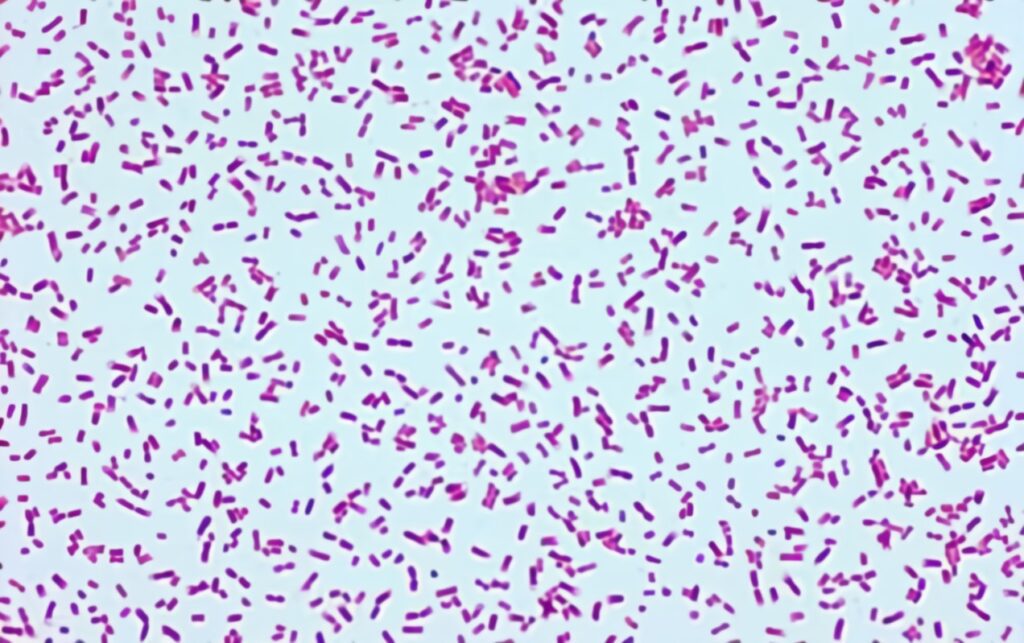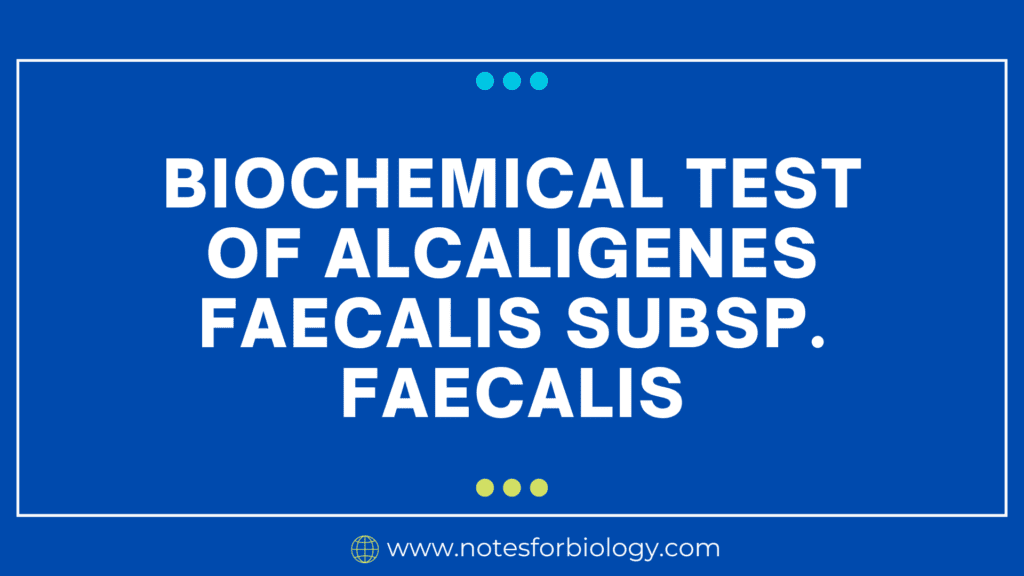Gram-negative, aerobic, non-fermentative bacteria that is a member of the Alcaligenaceae family is called Alcaligenes faecalis. It is frequently found in soil, water, and ecosystems that are related to both people and animals, such as the digestive system. This particular bacteria is well-known for having the capacity to emit a peculiar fruity smell. Although A. faecalis is usually not harmful, it can be an opportunistic pathogen that can cause infections such as bacteremia, pneumonia, and urinary tract infections, especially in those with impaired immune systems. The bacteria rely on oxidative metabolic pathways instead of fermenting carbohydrates, as evidenced by its oxidase-positive and catalase-positive responses.

Table of Contents
Definition of Alcaligenes faecalis
Alcaligenes faecalis subsp. faecalis is a Gram-negative bacterium that can be identified through a series of biochemical tests. These tests exploit the bacterium’s unique metabolic capabilities and enzymatic machinery to differentiate it from other bacteria.
Biochemical Test of Alcaligenes faecalis
Oxidase Test
This rapid test checks for the presence of the cytochrome c oxidase enzyme. A positive test, indicated by a colour change, suggests A. faecalis subsp. faecalis.
Catalase Test
This test detects the catalase enzyme, which breaks down hydrogen peroxide. A positive result with gas bubbles signifies the presence of the enzyme, a characteristic of A. faecalis subsp. faecalis.
Nitrate Reduction Test
These tests determine the ability of the bacteria to ferment or utilize various sugars as an energy source. A. faecalis subsp. faecalis typically does not ferment many carbohydrates.
Urease Test
This test detects the presence of the urease enzyme, which breaks down urea into ammonia and carbon dioxide. A positive test with a colour change is indicative of A. faecalis subsp. faecalis.
Indole Test
This test checks for the production of indole from the breakdown of tryptophan. A negative indole test is a characteristic of A. faecalis subsp.
Citrate Utilization Test
This test assesses the ability of the bacteria to utilize citrate as a sole carbon source. A. faecalis subsp. faecalis can usually utilize citrate.
Triple Sugar Iron (TSI) Agar Test
Alkaline/Alkaline (K/K), no H2S production, no gas production. A. faecalis does not ferment glucose, lactose, or sucrose. It does not produce hydrogen sulphide or gas.
Gelatin Hydrolysis Test
This test checks for the production is Positive. A. faecalis hydrolyzes gelatin, liquefying the medium
Benefits of Biochemical Testing
Accurate Identification
Biochemical tests provide a reliable and standardized method to distinguish A. faecalis subsp. faecalis from other similar bacteria. This is crucial in the clinical setting, as misidentification of bacteria can lead to inappropriate antibiotic therapy and potentially worse patient outcomes. Biochemical testing offers a high degree of accuracy compared to other identification methods, reducing the risk of errors and ensuring that patients receive the most effective treatment possible.
Species-Specific Characterization
The unique pattern of positive and negative results across these tests helps create a biochemical profile specific to A. faecalis subsp. faecalis. This profile serves as a fingerprint, allowing scientists to not only identify the bacteria but also differentiate between different strains of A. faecalis subsp. faecalis. This level of detail can be crucial in epidemiological studies, tracing the source of outbreaks and understanding the spread of particular strains.
Clinical Applications
Identifying A. faecalis subsp. faecalis can be crucial in diagnosing certain infections and determining appropriate treatment strategies. A. faecalis subsp. faecalis has been implicated in a variety of infections, including hospital-acquired pneumonia, urinary tract infections, and wound infections. By accurately identifying this bacterium, clinicians can implement targeted antibiotic therapy that is most effective against A. faecalis subsp. faecalis.
Frequently Asked Question
What is Alcaligenes faecalis?
Alcaligenes faecalis is a gram-negative, aerobic bacterium commonly found in soil, water, and environments associated with humans and animals. It is typically non-pathogenic but can cause opportunistic infections in immunocompromised individuals.
What biochemical tests are used to identify Alcaligenes faecalis?
Key biochemical tests include the oxidase test, catalase test, nitrate reduction test, urease test, indole test, methyl red (MR) test, Voges-Proskauer (VP) test, citrate utilization test, triple sugar iron (TSI) agar test, and gelatin hydrolysis test.
How do these biochemical characteristics help in clinical diagnosis?
These characteristics help clinicians accurately identify A. faecalis, understand its potential role in infections, and determine appropriate treatment options, especially in immunocompromised patients.
Related Article

